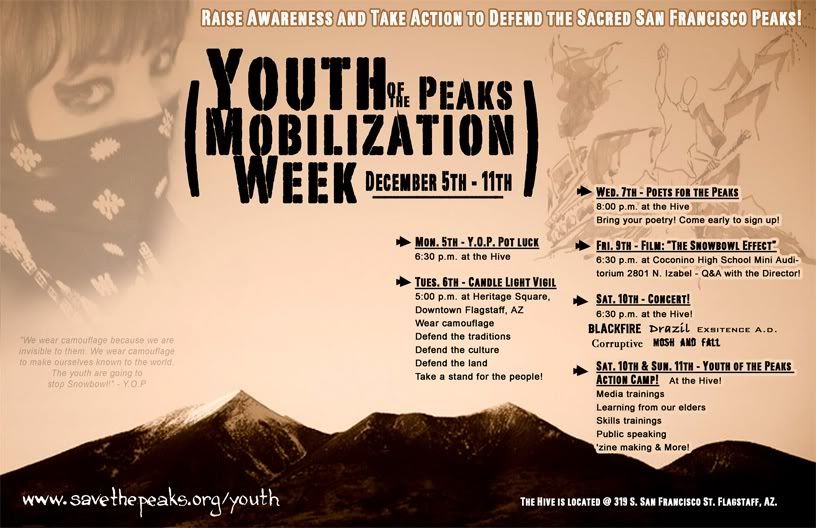Cobán, Verapaz, Guatemala
To understand this, you're going to need a good map. From Todos Santos Bartek and I headed even higher into the Guatemalan altiplano highlands, through endless fog and rocks to a dismal little town called San Pedro Saloma. It took us an hour waiting by the side of the road in Tres Caminos to flag down a bus. I played guitar and drew a small crowd, most of whom were laughing at me, which is never a bad thing. Then this local kid brought out his cheap Mexican classical that had never been tuned. I put it to the pipes, got it ready and we jammed for awhile, him on the one chord BOOM-pah-pah BOOM-pah-pah and me soloing like the constipated gringo rocker that I am. Full-on antics.
The bus was driving too fast for the narrow road, the driver all hopped up on the blasting spanish gospel music. HEY-SOOS DIVINO, DELIVER ME UNTO THE MUDDY STREETS AND HONKING HORNS OF SOLOMA, I prayed because I was moved to.
Soloma, en medio de la nada, is a Little America. So many men leave from here to work in the States that you'd think you were somewhere near la frontera instead of centroamérica... Western Union offices, llamadas internacionales, VIAJERO DE LA FRONTERA written on the windshield of pickups and men who smile sly when they slip words of engrish into conversation, because they can, pues.
The next morning we caught the first chicken bus out of there. For those unfamiliar, the chicken bus is a unique concept in transportation. They're old school busses from the States and Canada, sold off after they were deemed too old and too scary for white kids. Now they're in Guate, painted evil circus colors, and crammed with over 70 people usually. Riding one of these things up a road that is more potholes than not is really almost like its own Xtreme sport. Sitting over the wheel wells, you should see how much air you can catch at a time. I'm talking spine-compacting, gringo-flipping, diesel-fuming, XTREME ACCIÓN.
This road is that place you've always wondered about: where the sky comes down to meet the earth and talk things over. All around the bus, the clouds were so thick it was impossible to see more than three or four meters. Mud everywhere from here on out.
Four hours of chickbus xtreme hell. We arrive in Barillas, a wet frontier town that I only know through foggy windows. We were stopped long enough to buy a bag of peanuts, four oranges and 40oz of agua pura. Then we piled into the back of a Toyota Landcruiser, along with nine men and two little girls, all covered by a metal frame and canvas.
The road from Barillas to Playa Grande was only built eight years ago, though some of what was some of the most untouched jungle in Guate. It still doesn't appear on many maps, but for 35 quetzales (around four bucks) it's possible to make the five hour trip. This is far, far off the "gringo trail" of tourist Guatemala. During the civil war, especially during the early eighties, this was where some of the most bloody fighting took place. Organized guerillas were supported by little pueblos, and then the army would arrive to masacre, kidnap, rape and tourture people from these little towns for supporting the "communistas." It was a tug-of-war game played on the bloody backs of indiginous peasants.
After the peace accords were signed in 1996, the country entered a new era of hope and the government undertook many rural development projects, such as the road we were on. This can be seen as the government finally coming through on its promises ("Obras, no Palabras") of aiding rural peoples, or it can be seen as creating the infrastructure for greater control of the countryside by the central government. Either way, it meant a boom in rural settlement, with poor ladinos (mestizos, mixed blood) moving into areas that had been home to only indigenous peoples. The land is fertile here, and milpas (maize, corn fields) follow the road for its entire length. So fertile in fact, that there are two harvests a year.
When we dropped out of the clouds the rain stopped and we peeled back the canvas so we could all stand up and feel the wet air on our faces. We were a motley group, the farmers, the traditional indigenas en ropa tipica, the sketchy government official, the kid who worked for national health, the viejo, the young kids and the two gringos. In their eyes, we of course had no reason to be where we were: "¿Están aquí para trabajar? Ai, ¿pasear y nada más?" We were entertaining though, and the half-naked kids on the sides of the road would point as we flew by. Things got even more interesting as we passed the half-way point and I started to notice empty beer cans being thrown out of the cab of the truck.
We arrived in Playa Grande at sunset and collapsed onto cheap beds in a cement room. It was raining. Again. Playa Grande of course means Big Beach. There is neither a Playa nor is the place Grande. There isn't much to tell. It's famous for a laguna, but we didn't have the ganas to go look at more water, especially in the rain. Bartek reported that he actually saw some foriegners on his way to use the satillite internet connection, which really wasn't much of a connection at all.
Yesterday we took a microbus the hell out of the jungle. A microbus, it begs explaining, is a small, boxy, Toyota van. It is also a miracle that the thing does not fall to pieces as it is crammed with 16 people and driven at high speeds over more potholes and through deep mud. It is, however, preferable to the chicken bus as it is faster and may (or may not) have a shred of suspension left. The driver was a total pendejo who tried to charge us for bringing our backpacks with us, but he was an ameture at gringo-jipping, I shot him down with a couple well-placed, quick sentences, in front of everybody. Jaja, fucker. Hablo una chinga de español ya.
I have never in my life been so happy to see pavement. I fell asleep in excitement. Cobán is a good place to be. It's a real city, repleat with ATM's (in the nick of time), gallon jugs of agua, food besides pollo y arroz, night life and turismo. It's still a pretty meditative place, surrounded by fincas de café (coffee plantations) and clouds. Kinda romantic, makes me with Bartek was less Polish and more my girlfriend.
And that, cabrones, is three days without pavement. I stink.
foto: bart pogoda
; ?>/content/images/huachucas/migrant-jug.jpg)
; ?>/content/images/huachucas/migrant-trash.jpg) Trash left by migrants.
Trash left by migrants.; ?>/content/images/huachucas/child-pants.jpg) A child's pants.
A child's pants.; ?>/content/images/huachucas/mother-shirt.jpg) A tshirt.
A tshirt.; ?>/content/images/huachucas/brown-canyon.jpg) Upper Brown Canyon, Huachuca Mountains
Upper Brown Canyon, Huachuca Mountains; ?>/content/images/huachucas/san-pedro-valley.jpg) Sierra Vista and the San Pedro River Valley as seen from Brown Canyon
Sierra Vista and the San Pedro River Valley as seen from Brown Canyon






; ?>/content/images/splash/poets-peaks-flyer.gif)
